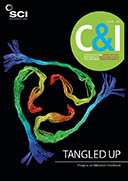Metamaterials that act as molecular invisibility cloaks have already been used to make very small objects invisible to the eye by redirecting light waves. Now, researchers have begun to investigate the idea of using large-scale metamaterial structures to make buildings invisible to earthquakes.
‘Wouldn't it be great if we could surround a historic castle or a nuclear power station with a metamaterial, so that when the seismic waves come at it they are sent around or diverted into the ground,’ says Richard Craster, head of the department of mathematics at Imperial College.
Together with researchers in Grenoble, France, the Imperial mathematicians carried out an experiment in a dense French forest, showing that it acts like a natural metamaterial. Vibrations were generated and monitored in a small pine wood using seismometers, and were found to be weaker inside the forest than outside. Trees resonate or absorb energy at certain frequencies based on their height, the researchers report. At 10-20m, the pines damped vibrations resonating at 30-45Hz, whereas the most destructive waves are less than 10Hz. To absorb energy from these seismic waves, the French researchers say structures 80 to 100m tall would be needed.
In a natural forest, the varying height of trees and gaps offer protection against a wider range of frequencies, but arranging the trees by decreasing height would be even better, they point out. And instead of using trees, we might someday design cities so that a forest of skyscrapers or other tall structures can mollify seismic waves, Philippe Roux, director of the National Centre for Scientific Research in Grenoble, told PBS news.
But as Craster himself acknowledges: ‘Trees are a useful proof-of-concept and handy for experiments as there are plenty of them, but to protect buildings it would need modification – and more than trees at seismic frequencies,’ notes Craster.
Others though are more skeptical. ‘I highly doubt that it would be effective, given the bandwidth and wide range of incidence direction of the waves impinging on a structure from a real large earthquake, compared with spending the same amount of money improving the structure itself,’ comments Kim Olsen, professor of seismology at San Diego State University, California.





